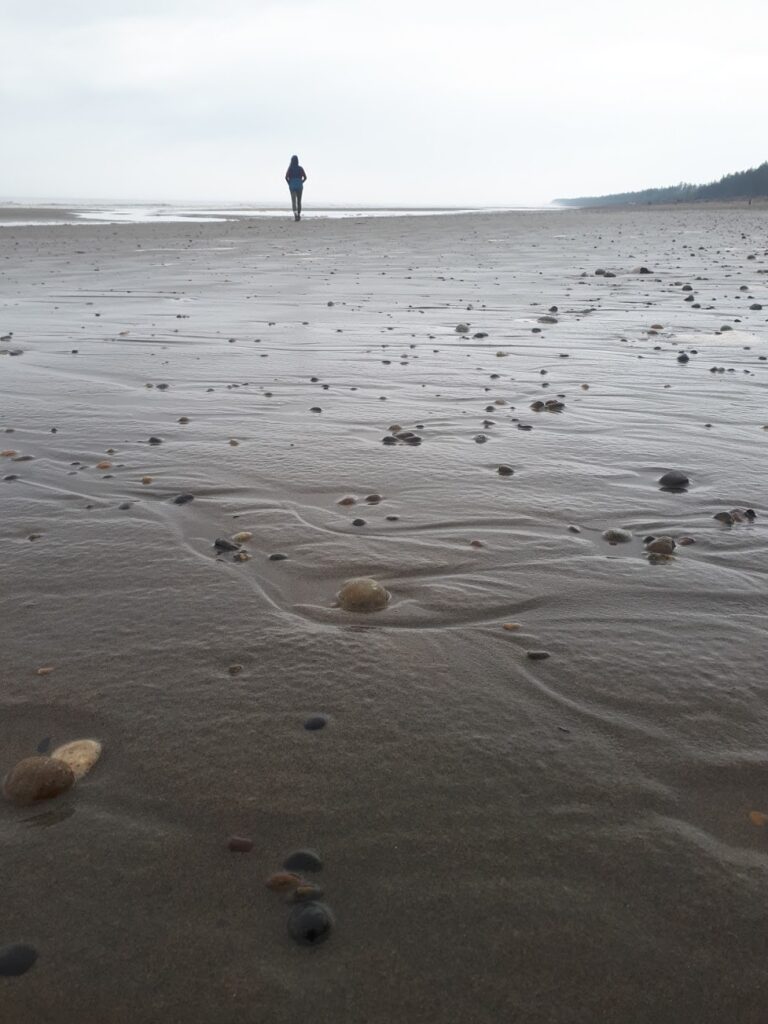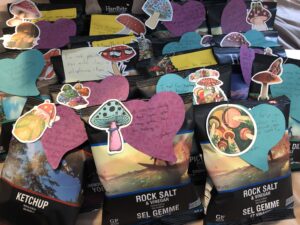Looking back on the past two years, I feel a lot of things…

but mostly, I feel grateful. Grateful to be healthy and alive, grateful to have made many wonderful friends, grateful for the guidance of my mentors and the direction the new BC curriculum points us in, and grateful to be on a career path that is focused on helping raise the next generation and bettering the world.
Something I will take with me from these two years is the importance of recognizing your own gifts to the world and, for educators, helping our learners realize theirs.
For myself, I have always had this sort of mixed desire to study both the Sciences and the Arts. I have never really understood how these two seemingly different halves of myself intertwine. I was lesson planning a few months ago when I finally began to figure out the nature of this desire…

It was the night before the start of my practicum 491, and I was up late trying to decide how I was going to tweak a lesson I had taught in my previous practicum. This lesson was (and is) very important to me, because it introduces the idea of Etuaptmumk – looking at the world through Western Science and Indigenous Science lenses simultaneously. I knew the lesson had potential, but I feel like it did not reach my learners the way that I had intended it to the first time around.
Now, usually I watch TV to fall asleep, but I had a strange desire to pick up a book I had started months before, but never got around to finishing – Braiding Sweetgrass by Robin Wall Kimmerer. I opened up the book to where I had left off to a chapter called “Asters & Goldenrod” and started reading. Twenty minutes later, tears streaming down my face, I had not only gotten what I needed for my lesson, but also for myself.
“Purple and yellow are a reciprocal pair…If my advisor was correct, the visual effect that so delights a human like me may be irrelevant to flowers. The real beholder whose eye they hope to catch is a bee bent on pollination. Bees perceive many spectra such as ultraviolet radiation. As it turns out though, goldenrod and asters appear very similarly to bee eyes and human eyes. We both think they’re beautiful. Their striking contrast when they grow together makes them the most attractive target in the whole meadow, a beacon for bees. Growing together, both receive more pollinator visits than they would if they were growing alone. It is a testable hypothesis; it’s a question of science, a question of art, and a question of beauty.
Why are they beautiful together? It is a phenomenon simultaneously material and spiritual, for which we need all wavelengths, for which we need depth perception. When I stare too long at the world with my science eyes, I see an afterimage of traditional knowledge. Might science and traditional knowledge be purple and yellow to one another, might they be goldenrod and asters? We see the world more fully when we use both.
The question of goldenrod and asters was of course just emblematic of what I really wanted to know. It was an architecture of relationships, of connections that I yearned to understand. I wanted to see the shimmering threads that hold it all together. And I wanted to know why we love the world, why the most ordinary scrap of meadow can rock us back on our heels in awe.
When botanists go walking the forests and fields looking for plants, we say we are goig on a foray. When writers do the same, we should call it a metaphoray, and the land is rich in both. We need them both…we understand a thing only when we understand it with all four aspects of our being: mind, body, emotion, and spirit. I came to understand quite sharply when I began my training as a scientist that science privileges only one, possibly two of those ways of knowing: mind and body.
There was a time when I teetered precariously with an awkward foot in each of the two worlds – the scientific and the indigenous. But then I learned to fly (side note and a weird coincidence – or perhaps a sign – my final reflection piece for . Or at least try. It was the bees that showed me how to move between different flowers – to drink the nectar and gather pollen from both. It is this dance of cross-pollination that can produce a new species of knowledge, a new way of being in the world. After all, there aren’t two worlds, there is just this one good green earth.
That September pairing of purple and gold is lived reciprocity; its wisdom is that the beauty of one is illuminated by the radiance of the other. Science and art, matter and spirit, indigenous knowledge and Western science – can they be goldenrod and asters for each other? When I am in their presence, their beauty asks me for reciprocity, to be the complementary colour, to make something beautiful in response.” (pages 45-47)
Inspired by this passage, and Kimmerer’s “teetering between worlds”, I realized that really I just have a desire to look at life from as many angles as possible. To look at the “architecture of relationships”. Biology and Drama both aim to hold a magnifying glass up to the world, and to study relationship…just in very different ways. They tell different stories, but each informs the other.
I have not fully figured my gift out yet, but I know it lies within this realm – where science and art meet.
As a new educator, I hope to help my learners begin to recognize their own gifts, and to give them a lens to look through that helps them see the world more fully, with gratitude and reciprocity.
The first step of this path is to connect with your learners, and I feel like I most certainly achieved that this practicum.

Thank you notes from my LS 11 students

Card from my Drama 9 students
Leave a Reply